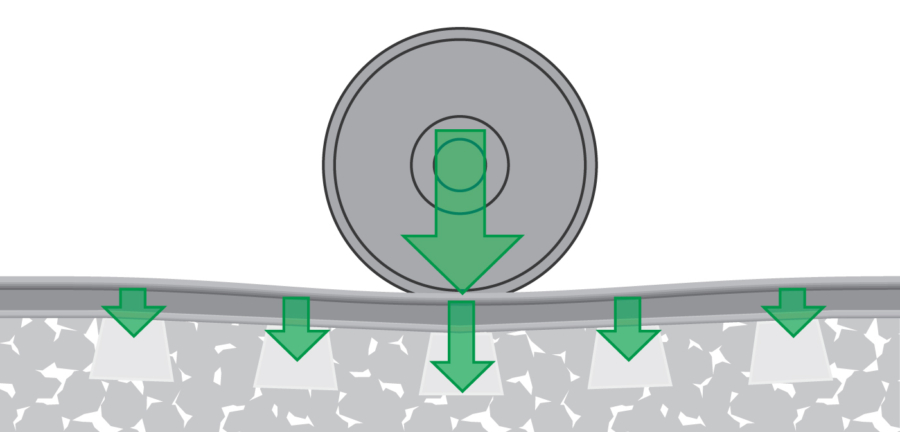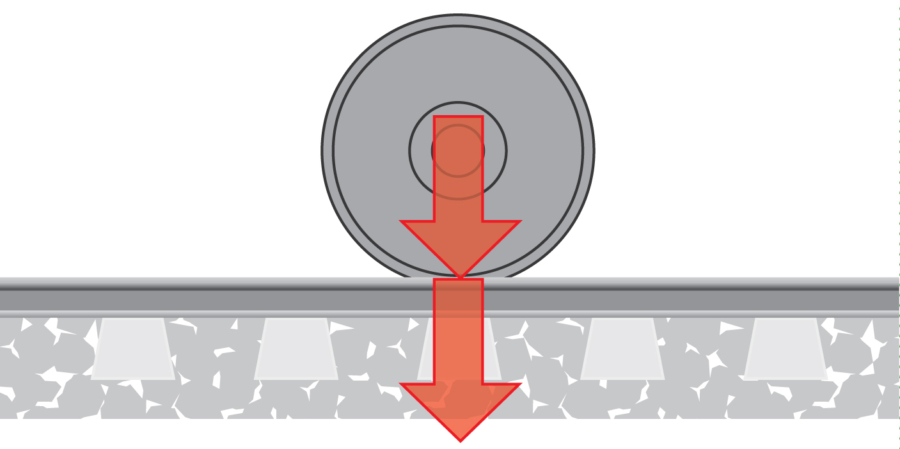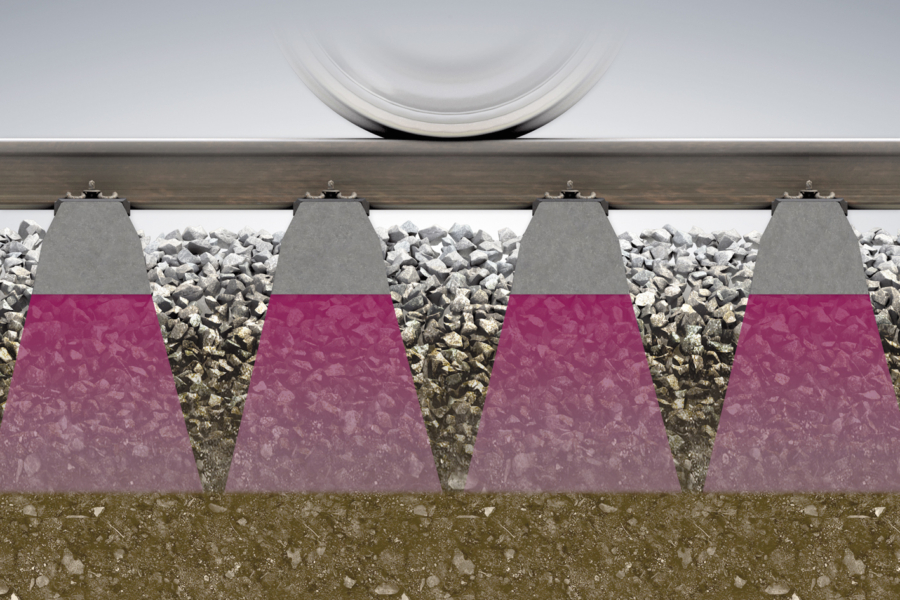
The interplay of the formation and the ballast bed ensures the distribution of the wheel loads. The excavating chain is a key feature in this process.
The ballast bed has to meet two fundamental requirements:
Carrying the ballast bed, the formation is vital to the quality and durability of the track geometry. It is crucial to produce a geometrically perfect formation, both in transverse and longitudinal direction. Faults in the formation quickly spread throughout the ballast.
A straight cut of the formation with the specified cross-fall of approx. 4–5% (1:25 to 1:20) ensures good drainage and prevents water traps in the track bed (see diagram on page 4).
Strategy for a durable track geometry: on-time ballast cleaning to restore the exact track geometry and, if necessary, formation rehabilitation.
The formation must also follow a smooth line in longitudinal direction. Irregular ballast layers under the sleepers result in uneven settlements under traffic load. Irregularities caused during installation lead to recurring track geometry faults in the longitudinal level.
Over the course of its life cycle, the track adapts to the longitudinal direction of the formation. This is the so-called “memory effect”. Longitudinal faults in the subsoil quickly find their way into the track. This makes frequent tamping works necessary, reduces the track’s service life and increases the life cycle costs.

Traffic loads must be distributed uniformly into the ballast bed.

Hard spots in the ballast bed increase the forces in the ballast and make the ballast stones deviate from their positions more quickly. This makes it necessary to tamp the track more frequently.

Recent studies have shown that the load distribution angle is very small. Vertical forces are distributed almost vertically into the ground (65% of the load spreads directly underneath the sleeper). A ballast depth of 22 cm results in a mean load distribution angle of 20°. Load tests with a ballast depth of 32 cm show a mean load dispersion angle of 17°